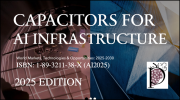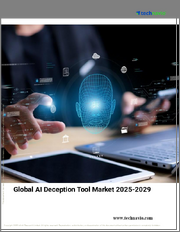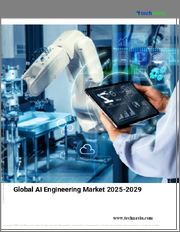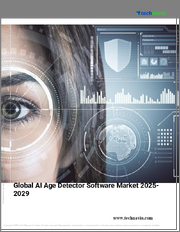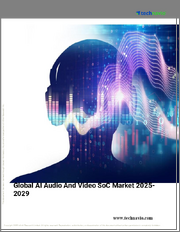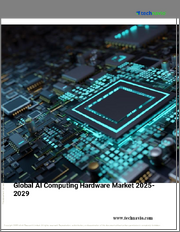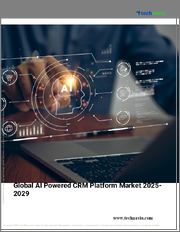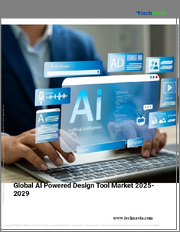
|
시장보고서
상품코드
1612239
세계의 인공지능 시장 : 컴포넌트별, 기술별, 도입 형태별, 조직 규모별, 비즈니스 기능별, 산업별 예측(2025-2030년)Artificial Intelligence Market by Component (Hardware, Services, Software), Technology (Computer Vision, Context-Aware Computing, Handwriting Recognition), Deployment Mode, Organization Size, Business Function, Industry - Global Forecast 2025-2030 |
||||||
인공지능 시장은 2023년 3,230억 6,000만 달러로 평가되었으며, 2024년 4,263억 7,000만 달러에 이를 것으로 예상되며 CAGR 33.42%로 성장하여 2030년에는 2조 4,316억 3,000만 달러에 달할 것으로 예상됩니다.
인공지능(AI)은 학습, 추론, 자기 수정 등의 프로세스를 포함한 기계, 특히 컴퓨터 시스템에 의한 인간 지능의 시뮬레이션으로 정의됩니다. 로봇 공학 등 다양한 하위 분야에 이르는 AI의 필요성은 효율성을 높이고 혁신을 촉진하고 여러 영역에 걸쳐 업무를 합리화할 가능성이 있기 때문에 발생하고 있습니다. AI는 예측 분석 별화 의료에 사용되는 헬스케어, 리스크 평가나 부정 검지에 사용되는 금융, 고객 서비스나 재고 관리에 사용되는 소매등의 분야에 침투하고 있습니다. 최종 용도의 범위는 넓고, 자동차, 교육, 오락, 농업 등 산업에 영향을 미칩니다. 시장 인사이트에 따르면, AI의 성장은 기술의 진보, 빅 데이터 분석 증가, 클라우드 기반 애플리케이션의 채용 증가에 의해 추진되고 있습니다. 통합 및 AI 주도의 IoT 솔루션 개발에 있습니다. 이러한 기회를 포착하기위한 조사에는 학제 간 연구 팀에 투자, 견고한 데이터 처리 방법의 채용, 하이테크 기업과 업계 전문 조직과의 협력 관계 촉진 등이 포함됩니다. 그리고 데이터의 프라이버시에 대한 우려, 윤리적 배려, AI의 초기 도입 비용의 높이 등의 제약이 큰 과제가 되고 있습니다. 할 수 있습니다. 개척의 기회가 익은 혁신 분야에는 엣지 컴퓨팅, 자율 시스템, AI 주도의 예지 보전 등이 있습니다. 이 기업은 앞으로 나아가기 위해 R & D에 대한 민첩한 접근 방식을 유지하는 것이 좋습니다.
| 주요 시장 통계 | |
|---|---|
| 기준년(2023) | 3,230억 6,000만 달러 |
| 추정년(2024) | 4,263억 7,000만 달러 |
| 예측년(2030) | 2조 4,316억 3,000만 달러 |
| CAGR(%) | 33.42% |
시장 역학: 빠르게 진화하는 인공지능 시장의 주요 시장 인사이트 공개
인공지능 시장은 수요 및 공급의 역동적인 상호작용을 통해 변모를 이루고 있습니다. 비즈니스 기회를 얻을 수 있습니다. 이러한 동향을 종합적으로 파악함으로써 기업은 정치적, 지리적, 기술적, 사회적, 경제적 영역에 걸친 다양한 리스크를 경감할 수 있음과 동시에 소비자 행동과 그것이 제조 비용 또는 구매 동향에 미치는 영향을보다 명확하게 이해할 수 있습니다.
- 시장 성장 촉진요인
- 업계 전반의 자동화 수요 증가와 클라우드 기반 서비스 성장
- 디지털화에 대한 정부의 정책과 인센티브의 실시 증가
- AI 개발을 위한 신흥 기업에 유리한 생태계 개발
- 시장 성장 억제요인
- 연구 개발 및 솔루션의 정기적인 유지 보수를위한 선행 투자 비용이 높습니다.
- 시장 기회
- 머신러닝과 심층 학습 프레임워크의 진보에 의한 AI 능력의 향상
- 드론이나 자동 운전차에 있어서의 AI 영상 인식 기술의 높은 가능성
- 시장의 과제
- AI의 데이터 프라이버시와 지적 재산권에 관한 우려
Porter's Five Force : 인공지능 시장을 탐색하는 전략 도구
Porter's Five Force Framework는 시장 상황경쟁 구도를 파악하는 중요한 도구입니다. 프레임워크는 기업이 시장 내 세력도를 평가하고 신규 사업의 수익성을 판단하는 데 도움이 됩니다. 피함으로써 더 강인한 시장에서 포지셔닝을 보장할 수 있습니다.
PESTLE 분석 : 인공지능 시장에서 외부로부터의 영향 파악
외부 거시 환경 요인은 인공지능 시장의 성과 역학을 형성하는 데 매우 중요한 역할을합니다. PESTLE 요인을 조사함으로써 기업은 잠재적인 위험과 기회를 더 잘 이해할 수 있습니다. 예측할 수 있는 적극적인 의사 결정을 할 준비가 되었습니다.
시장 점유율 분석 : 인공지능 시장 경쟁 구도 파악
인공지능 시장의 상세한 시장 점유율 분석을 통해 공급업체의 성과를 종합적으로 평가할 수 있습니다. 분명히 이 분석을 통해 시장 집중, 단편화, 통합 동향을 밝혀내고 벤더는 경쟁이 치열해지는 가운데 자신의 지위를 높이는 전략적 의사결정을 하기 위해 필요한 지견을 얻을 수 있습니다.
FPNV 포지셔닝 매트릭스 : 인공지능 시장에서 공급업체의 성능 평가
FPNV 포지셔닝 매트릭스는 인공지능 시장에서 벤더를 평가하는 중요한 도구입니다. 기본 결정을 내릴 수 있습니다. 네 가지 사분면을 통해 벤더를 명확하고 정확하게 분류하고 전략 목표에 가장 적합한 파트너 및 솔루션을 파악할 수 있습니다.
전략분석과 추천 : 인공지능 시장에서 성공을 위한 길을 그립니다.
인공지능 시장의 전략분석은 세계 시장에서의 프레즌스 강화를 목표로 하는 기업에 필수적입니다. 이 접근법을 통해 경쟁 구도에서 과제를 극복하고 새로운 비즈니스 기회를 활용하여 장기적인 성공을 거둘 수 있는 체제를 구축할 수 있습니다.
이 보고서는 주요 관심 분야를 포괄하는 시장의 종합적인 분석을 제공합니다.
1. 시장 침투: 현재 시장 환경의 상세한 검토, 주요 기업의 광범위한 데이터, 시장 도달범위 및 전반적인 영향력 평가.
2. 시장 개척도: 신흥 시장의 성장 기회를 파악하고 기존 분야의 확장 가능성을 평가하며 미래 성장을 위한 전략적 로드맵을 제공합니다.
3. 시장 다양화: 최근 제품 출시, 미개척 지역, 업계의 주요 진보, 시장을 형성하는 전략적 투자를 분석합니다.
4. 경쟁 평가 및 정보 : 경쟁 구도를 철저히 분석하여 시장 점유율, 사업 전략, 제품 포트폴리오, 인증, 규제 당국 승인, 특허 동향, 주요 기업의 기술 진보 등을 검증합니다.
5. 제품 개발 및 혁신 : 미래 시장 성장을 가속할 것으로 예상되는 최첨단 기술, R&D 활동, 제품 혁신을 강조합니다.
또한 이해관계자가 충분한 정보를 얻고 의사결정을 할 수 있도록 중요한 질문에 대답하고 있습니다.
1. 현재 시장 규모와 향후 성장 예측은?
2. 최고의 투자 기회를 제공하는 제품, 부문 및 지역은 어디입니까?
3. 시장을 형성하는 주요 기술 동향과 규제의 영향은?
4. 주요 벤더의 시장 점유율과 경쟁 포지션은?
5. 벤더 시장 진입·철수 전략의 원동력이 되는 수익원과 전략적 기회는 무엇인가?
목차
제1장 서문
제2장 조사 방법
제3장 주요 요약
제4장 시장 개요
제5장 시장 인사이트
- 시장 역학
- 성장 촉진요인
- 업계 전반의 자동화 수요 증가와 클라우드 기반 서비스 성장
- 디지털화를 위한 정부의 정책과 인센티브의 실시 증가
- AI 개발의 스타트업에 바람직한 에코시스템이 성장중
- 억제요인
- 연구개발과 솔루션의 정기적인 유지보수를 위한 초기 투자비용이 높다
- 기회
- 머신러닝과 딥러닝 프레임워크의 진보에 의해 AI의 능력이 향상
- 드론이나 자동 운전차에 있어서의 AI 영상 인식 기술의 높은 가능성
- 과제
- AI의 데이터 프라이버시와 지적 재산 문제에 대한 우려
- 성장 촉진요인
- 시장 세분화 분석
- 컴포넌트: AI 모델 생성, 교육, 배포를 위한 AI 소프트웨어 사용 증가
- 업계 : 정보 기술 업계에서 AI 솔루션의 높은 가능성은 네트워크의 신뢰성을 향상시키고 고객 경험을 향상시킵니다.
- Porter's Five Forces 분석
- PESTEL 분석
- 정치적
- 경제
- 사교
- 기술적
- 법률상
- 환경
제6장 인공지능 시장 : 컴포넌트별
- 하드웨어
- 메모리
- 네트워크
- 프로세서
- 센서
- 서비스
- 전개 및 통합
- 지원 및 유지 보수
- 소프트웨어
- 용도 프로그램 인터페이스
- 머신러닝 프레임워크
제7장 인공지능시장 : 기술별
- 컴퓨터 비전
- 컨텍스트 인식 컴퓨팅
- 필기 인식
- 머신러닝
- 딥러닝
- 강화 학습
- 교사 있음 학습
- 비지도 학습
- 자연언어처리
- 음성인식
제8장 인공지능 시장 : 전개 모드별
- 클라우드
- 온프레미스
제9장 인공지능 시장 : 조직 규모별
- 대기업
- 중소기업
제10장 인공지능 시장 업무 기능별
- 사이버 보안
- 재무 및 회계
- 인사관리
- 법무 및 규정 준수
- 오퍼레이션
- 판매 및 마케팅
- 공급망 관리
제11장 인공지능시장 : 업계별
- 항공우주 및 방어
- 자동차 및 운송
- 은행/금융서비스/보험
- 건축/건설/부동산
- 소비재?소매
- 교육
- 에너지·유틸리티
- 정부 및 공공 부문
- 헬스케어 및 생명과학
- 정보기술
- 제조업
- 미디어 및 엔터테인먼트
- 통신
- 여행?호스피탈리티
제12장 아메리카의 인공지능 시장
- 아르헨티나
- 브라질
- 캐나다
- 멕시코
- 미국
제13장 아시아태평양의 인공지능 시장
- 호주
- 중국
- 인도
- 인도네시아
- 일본
- 말레이시아
- 필리핀
- 싱가포르
- 한국
- 대만
- 태국
- 베트남
제14장 유럽·중동 및 아프리카의 인공지능 시장
- 덴마크
- 이집트
- 핀란드
- 프랑스
- 독일
- 이스라엘
- 이탈리아
- 네덜란드
- 나이지리아
- 노르웨이
- 폴란드
- 카타르
- 러시아
- 사우디아라비아
- 남아프리카
- 스페인
- 스웨덴
- 스위스
- 터키
- 아랍에미리트(UAE)
- 영국
제15장 경쟁 구도
- 시장 점유율 분석 2023
- FPNV 포지셔닝 매트릭스, 2023
- 경쟁 시나리오 분석
- OpenAI, 복잡한 과학적 과제에 임하기 위한 딸기 시리즈의 AI 모델을 발표
- Cisco Systems, Inc.는 AI 기반 솔루션을 개발하기 위한 AI 투자 펀드를 시작
- Cognizant와 Google Cloud가 제휴하여 AI 기반 소프트웨어 개발의 효율성과 혁신을 강화
- 전략 분석과 제안
- SAP SE
기업 목록
- Accenture PLC
- Adobe Inc.
- Aerobotics,(Pty) Ltd.
- Alibaba Group Holding Limited
- Altron Limited
- Amazon Web Services, Inc.
- Autodesk, Inc.
- Baidu, Inc.
- Business Connexion(Pty) Ltd. by Telkom Group
- C3.ai, Inc.
- CLEVVA Pty. Ltd.
- Cortex Logic
- Databricks, Inc.
- DataProphet Proprietary Limited
- Dimension Data Holdings PLC by NTT DATA Corporation
- General Electric Company
- Google LLC by Alphabet Inc.
- H2O.ai, Inc.
- iiDENTIFii(PTY) Ltd.
- Infosys Limited
- Intel Corporation
- International Business Machines Corporation
- Microsoft Corporation
- NVIDIA Corporation
- OpenAI OpCo, LLC
- Oracle Corporation
- Palantir Technologies Inc.
- Qualcomm Inc.
- Robert Bosch GmbH
- Salesforce Inc.
- SAP SE
- SAS Institute Inc.
- ServiceNow, Inc.
- Splunk Inc. by Cisco Systems Inc.
- Tencent Holdings Ltd.
- UiPath, Inc.
- Zindi, Inc.
The Artificial Intelligence Market was valued at USD 323.06 billion in 2023, expected to reach USD 426.37 billion in 2024, and is projected to grow at a CAGR of 33.42%, to USD 2,431.63 billion by 2030.
Artificial Intelligence (AI) is defined as the simulation of human intelligence through machines, particularly computer systems, involving processes such as learning, reasoning, and self-correction. Its scope extends to various subfields such as machine learning, neural networks, natural language processing, and robotics. The necessity of AI arises due to its potential to enhance efficiency, foster innovation, and streamline operations across multiple domains. Application-wise, AI is penetrating sectors like healthcare, where it's used for predictive analytics and personalized medicine, finance for risk assessment and fraud detection, and retail for customer service and inventory management. The end-use scope is broad, impacting industries such as automotive, education, entertainment, and agriculture. Market insights reveal that AI growth is propelled by technological advancements, an increase in big data analytics, and the rising adoption of cloud-based applications. Potential opportunities lie in the integration of AI into small and medium businesses and developing AI-driven IoT solutions. Recommendations to seize these opportunities include investing in multidisciplinary research teams, adopting robust data handling practices, and fostering collaboration between tech companies and industry-specific organizations. However, limitations such as data privacy concerns, ethical considerations, and the high cost of initial AI adoption pose significant challenges. Furthermore, the shortage of skilled professionals and regulatory hurdles can stifle market expansion. Innovation areas ripe for exploration include edge computing, autonomous systems, and AI-driven predictive maintenance. The nature of the AI market is dynamic, characterized by rapid technological shifts and evolving consumer demands. Businesses are encouraged to maintain an agile approach to R&D to stay ahead. The evolving landscape of AI demands continuous learning and adaptation, positioning it as a vital area for strategic investment and growth.
| KEY MARKET STATISTICS | |
|---|---|
| Base Year [2023] | USD 323.06 billion |
| Estimated Year [2024] | USD 426.37 billion |
| Forecast Year [2030] | USD 2,431.63 billion |
| CAGR (%) | 33.42% |
Market Dynamics: Unveiling Key Market Insights in the Rapidly Evolving Artificial Intelligence Market
The Artificial Intelligence Market is undergoing transformative changes driven by a dynamic interplay of supply and demand factors. Understanding these evolving market dynamics prepares business organizations to make informed investment decisions, refine strategic decisions, and seize new opportunities. By gaining a comprehensive view of these trends, business organizations can mitigate various risks across political, geographic, technical, social, and economic domains while also gaining a clearer understanding of consumer behavior and its impact on manufacturing costs and purchasing trends.
- Market Drivers
- Growing demand for automation across industries and the growth of cloud-based services
- Rising implementation of government policies and incentives for digitization
- Growing favorable ecosystem for the start-ups for the development of AI
- Market Restraints
- High upfront cost of investments for R&D and regular maintenance of solutions
- Market Opportunities
- Growing advancements in machine learning and deep learning frameworks improving AI capabilities
- High potential for AI image recognition technology across drones and self-driving cars
- Market Challenges
- Concerns regarding data privacy and intellectual property issues of AI
Porter's Five Forces: A Strategic Tool for Navigating the Artificial Intelligence Market
Porter's five forces framework is a critical tool for understanding the competitive landscape of the Artificial Intelligence Market. It offers business organizations with a clear methodology for evaluating their competitive positioning and exploring strategic opportunities. This framework helps businesses assess the power dynamics within the market and determine the profitability of new ventures. With these insights, business organizations can leverage their strengths, address weaknesses, and avoid potential challenges, ensuring a more resilient market positioning.
PESTLE Analysis: Navigating External Influences in the Artificial Intelligence Market
External macro-environmental factors play a pivotal role in shaping the performance dynamics of the Artificial Intelligence Market. Political, Economic, Social, Technological, Legal, and Environmental factors analysis provides the necessary information to navigate these influences. By examining PESTLE factors, businesses can better understand potential risks and opportunities. This analysis enables business organizations to anticipate changes in regulations, consumer preferences, and economic trends, ensuring they are prepared to make proactive, forward-thinking decisions.
Market Share Analysis: Understanding the Competitive Landscape in the Artificial Intelligence Market
A detailed market share analysis in the Artificial Intelligence Market provides a comprehensive assessment of vendors' performance. Companies can identify their competitive positioning by comparing key metrics, including revenue, customer base, and growth rates. This analysis highlights market concentration, fragmentation, and trends in consolidation, offering vendors the insights required to make strategic decisions that enhance their position in an increasingly competitive landscape.
FPNV Positioning Matrix: Evaluating Vendors' Performance in the Artificial Intelligence Market
The Forefront, Pathfinder, Niche, Vital (FPNV) Positioning Matrix is a critical tool for evaluating vendors within the Artificial Intelligence Market. This matrix enables business organizations to make well-informed decisions that align with their goals by assessing vendors based on their business strategy and product satisfaction. The four quadrants provide a clear and precise segmentation of vendors, helping users identify the right partners and solutions that best fit their strategic objectives.
Strategy Analysis & Recommendation: Charting a Path to Success in the Artificial Intelligence Market
A strategic analysis of the Artificial Intelligence Market is essential for businesses looking to strengthen their global market presence. By reviewing key resources, capabilities, and performance indicators, business organizations can identify growth opportunities and work toward improvement. This approach helps businesses navigate challenges in the competitive landscape and ensures they are well-positioned to capitalize on newer opportunities and drive long-term success.
Key Company Profiles
The report delves into recent significant developments in the Artificial Intelligence Market, highlighting leading vendors and their innovative profiles. These include Accenture PLC, Adobe Inc., Aerobotics, (Pty) Ltd., Alibaba Group Holding Limited, Altron Limited, Amazon Web Services, Inc., Autodesk, Inc., Baidu, Inc., Business Connexion (Pty) Ltd. by Telkom Group, C3.ai, Inc., CLEVVA Pty. Ltd., Cortex Logic, Databricks, Inc., DataProphet Proprietary Limited, Dimension Data Holdings PLC by NTT DATA Corporation, General Electric Company, Google LLC by Alphabet Inc., H2O.ai, Inc., iiDENTIFii (PTY) Ltd., Infosys Limited, Intel Corporation, International Business Machines Corporation, Microsoft Corporation, NVIDIA Corporation, OpenAI OpCo, LLC, Oracle Corporation, Palantir Technologies Inc., Qualcomm Inc., Robert Bosch GmbH, Salesforce Inc., SAP SE, SAS Institute Inc., ServiceNow, Inc., Splunk Inc. by Cisco Systems Inc., Tencent Holdings Ltd., UiPath, Inc., and Zindi, Inc..
Market Segmentation & Coverage
This research report categorizes the Artificial Intelligence Market to forecast the revenues and analyze trends in each of the following sub-markets:
- Based on Component, market is studied across Hardware, Services, and Software. The Hardware is further studied across Memory, Network, Processors, and Sensors. The Services is further studied across Deployment & Integration and Support & Maintenance. The Software is further studied across Application Program Interface and Machine Learning Framework.
- Based on Technology, market is studied across Computer Vision, Context-Aware Computing, Handwriting Recognition, Machine Learning, Natural Language Processing, and Speech Recognition. The Machine Learning is further studied across Deep Learning, Reinforcement Learning, Supervised Learning, and Unsupervised Learning.
- Based on Deployment Mode, market is studied across Cloud and On-Premise.
- Based on Organization Size, market is studied across Large Enterprises and Small & Medium Enterprises.
- Based on Business Function, market is studied across Cybersecurity, Finance & Accounting, Human Resource Management, Legal & Compliance, Operations, Sales & Marketing, and Supply Chain Management.
- Based on Industry, market is studied across Aerospace & Defense, Automotive & Transportation, Banking, Financial Services & Insurance, Building, Construction & Real Estate, Consumer Goods & Retail, Education, Energy & Utilities, Government & Public Sector, Healthcare & Life Sciences, Information Technology, Manufacturing, Media & Entertainment, Telecommunication, and Travel & Hospitality.
- Based on Region, market is studied across Americas, Asia-Pacific, and Europe, Middle East & Africa. The Americas is further studied across Argentina, Brazil, Canada, Mexico, and United States. The United States is further studied across California, Florida, Illinois, New York, Ohio, Pennsylvania, and Texas. The Asia-Pacific is further studied across Australia, China, India, Indonesia, Japan, Malaysia, Philippines, Singapore, South Korea, Taiwan, Thailand, and Vietnam. The Europe, Middle East & Africa is further studied across Denmark, Egypt, Finland, France, Germany, Israel, Italy, Netherlands, Nigeria, Norway, Poland, Qatar, Russia, Saudi Arabia, South Africa, Spain, Sweden, Switzerland, Turkey, United Arab Emirates, and United Kingdom.
The report offers a comprehensive analysis of the market, covering key focus areas:
1. Market Penetration: A detailed review of the current market environment, including extensive data from top industry players, evaluating their market reach and overall influence.
2. Market Development: Identifies growth opportunities in emerging markets and assesses expansion potential in established sectors, providing a strategic roadmap for future growth.
3. Market Diversification: Analyzes recent product launches, untapped geographic regions, major industry advancements, and strategic investments reshaping the market.
4. Competitive Assessment & Intelligence: Provides a thorough analysis of the competitive landscape, examining market share, business strategies, product portfolios, certifications, regulatory approvals, patent trends, and technological advancements of key players.
5. Product Development & Innovation: Highlights cutting-edge technologies, R&D activities, and product innovations expected to drive future market growth.
The report also answers critical questions to aid stakeholders in making informed decisions:
1. What is the current market size, and what is the forecasted growth?
2. Which products, segments, and regions offer the best investment opportunities?
3. What are the key technology trends and regulatory influences shaping the market?
4. How do leading vendors rank in terms of market share and competitive positioning?
5. What revenue sources and strategic opportunities drive vendors' market entry or exit strategies?
Table of Contents
1. Preface
- 1.1. Objectives of the Study
- 1.2. Market Segmentation & Coverage
- 1.3. Years Considered for the Study
- 1.4. Currency & Pricing
- 1.5. Language
- 1.6. Stakeholders
2. Research Methodology
- 2.1. Define: Research Objective
- 2.2. Determine: Research Design
- 2.3. Prepare: Research Instrument
- 2.4. Collect: Data Source
- 2.5. Analyze: Data Interpretation
- 2.6. Formulate: Data Verification
- 2.7. Publish: Research Report
- 2.8. Repeat: Report Update
3. Executive Summary
4. Market Overview
5. Market Insights
- 5.1. Market Dynamics
- 5.1.1. Drivers
- 5.1.1.1. Growing demand for automation across industries and the growth of cloud-based services
- 5.1.1.2. Rising implementation of government policies and incentives for digitization
- 5.1.1.3. Growing favorable ecosystem for the start-ups for the development of AI
- 5.1.2. Restraints
- 5.1.2.1. High upfront cost of investments for R&D and regular maintenance of solutions
- 5.1.3. Opportunities
- 5.1.3.1. Growing advancements in machine learning and deep learning frameworks improving AI capabilities
- 5.1.3.2. High potential for AI image recognition technology across drones and self-driving cars
- 5.1.4. Challenges
- 5.1.4.1. Concerns regarding data privacy and intellectual property issues of AI
- 5.1.1. Drivers
- 5.2. Market Segmentation Analysis
- 5.2.1. Component: Growing usage of AI software for creating, training, and deploying AI models
- 5.2.2. Industry: High potential of AI solutions in the information technology industry to ensure higher network reliability and better customer experiences
- 5.3. Porter's Five Forces Analysis
- 5.3.1. Threat of New Entrants
- 5.3.2. Threat of Substitutes
- 5.3.3. Bargaining Power of Customers
- 5.3.4. Bargaining Power of Suppliers
- 5.3.5. Industry Rivalry
- 5.4. PESTLE Analysis
- 5.4.1. Political
- 5.4.2. Economic
- 5.4.3. Social
- 5.4.4. Technological
- 5.4.5. Legal
- 5.4.6. Environmental
6. Artificial Intelligence Market, by Component
- 6.1. Introduction
- 6.2. Hardware
- 6.2.1. Memory
- 6.2.2. Network
- 6.2.3. Processors
- 6.2.4. Sensors
- 6.3. Services
- 6.3.1. Deployment & Integration
- 6.3.2. Support & Maintenance
- 6.4. Software
- 6.4.1. Application Program Interface
- 6.4.2. Machine Learning Framework
7. Artificial Intelligence Market, by Technology
- 7.1. Introduction
- 7.2. Computer Vision
- 7.3. Context-Aware Computing
- 7.4. Handwriting Recognition
- 7.5. Machine Learning
- 7.5.1. Deep Learning
- 7.5.2. Reinforcement Learning
- 7.5.3. Supervised Learning
- 7.5.4. Unsupervised Learning
- 7.6. Natural Language Processing
- 7.7. Speech Recognition
8. Artificial Intelligence Market, by Deployment Mode
- 8.1. Introduction
- 8.2. Cloud
- 8.3. On-Premise
9. Artificial Intelligence Market, by Organization Size
- 9.1. Introduction
- 9.2. Large Enterprises
- 9.3. Small & Medium Enterprises
10. Artificial Intelligence Market, by Business Function
- 10.1. Introduction
- 10.2. Cybersecurity
- 10.3. Finance & Accounting
- 10.4. Human Resource Management
- 10.5. Legal & Compliance
- 10.6. Operations
- 10.7. Sales & Marketing
- 10.8. Supply Chain Management
11. Artificial Intelligence Market, by Industry
- 11.1. Introduction
- 11.2. Aerospace & Defense
- 11.3. Automotive & Transportation
- 11.4. Banking, Financial Services & Insurance
- 11.5. Building, Construction & Real Estate
- 11.6. Consumer Goods & Retail
- 11.7. Education
- 11.8. Energy & Utilities
- 11.9. Government & Public Sector
- 11.10. Healthcare & Life Sciences
- 11.11. Information Technology
- 11.12. Manufacturing
- 11.13. Media & Entertainment
- 11.14. Telecommunication
- 11.15. Travel & Hospitality
12. Americas Artificial Intelligence Market
- 12.1. Introduction
- 12.2. Argentina
- 12.3. Brazil
- 12.4. Canada
- 12.5. Mexico
- 12.6. United States
13. Asia-Pacific Artificial Intelligence Market
- 13.1. Introduction
- 13.2. Australia
- 13.3. China
- 13.4. India
- 13.5. Indonesia
- 13.6. Japan
- 13.7. Malaysia
- 13.8. Philippines
- 13.9. Singapore
- 13.10. South Korea
- 13.11. Taiwan
- 13.12. Thailand
- 13.13. Vietnam
14. Europe, Middle East & Africa Artificial Intelligence Market
- 14.1. Introduction
- 14.2. Denmark
- 14.3. Egypt
- 14.4. Finland
- 14.5. France
- 14.6. Germany
- 14.7. Israel
- 14.8. Italy
- 14.9. Netherlands
- 14.10. Nigeria
- 14.11. Norway
- 14.12. Poland
- 14.13. Qatar
- 14.14. Russia
- 14.15. Saudi Arabia
- 14.16. South Africa
- 14.17. Spain
- 14.18. Sweden
- 14.19. Switzerland
- 14.20. Turkey
- 14.21. United Arab Emirates
- 14.22. United Kingdom
15. Competitive Landscape
- 15.1. Market Share Analysis, 2023
- 15.2. FPNV Positioning Matrix, 2023
- 15.3. Competitive Scenario Analysis
- 15.3.1. OpenAI unveils strawberry series AI models to tackle complex scientific challenges
- 15.3.2. Cisco Systems, Inc. launched an AI investment fund to develop AI-based solutions
- 15.3.3. Cognizant and Google Cloud partnership to enhance software development efficiency and innovation based on AI
- 15.4. Strategy Analysis & Recommendation
- 15.4.1. SAP SE
Companies Mentioned
- 1. Accenture PLC
- 2. Adobe Inc.
- 3. Aerobotics, (Pty) Ltd.
- 4. Alibaba Group Holding Limited
- 5. Altron Limited
- 6. Amazon Web Services, Inc.
- 7. Autodesk, Inc.
- 8. Baidu, Inc.
- 9. Business Connexion (Pty) Ltd. by Telkom Group
- 10. C3.ai, Inc.
- 11. CLEVVA Pty. Ltd.
- 12. Cortex Logic
- 13. Databricks, Inc.
- 14. DataProphet Proprietary Limited
- 15. Dimension Data Holdings PLC by NTT DATA Corporation
- 16. General Electric Company
- 17. Google LLC by Alphabet Inc.
- 18. H2O.ai, Inc.
- 19. iiDENTIFii (PTY) Ltd.
- 20. Infosys Limited
- 21. Intel Corporation
- 22. International Business Machines Corporation
- 23. Microsoft Corporation
- 24. NVIDIA Corporation
- 25. OpenAI OpCo, LLC
- 26. Oracle Corporation
- 27. Palantir Technologies Inc.
- 28. Qualcomm Inc.
- 29. Robert Bosch GmbH
- 30. Salesforce Inc.
- 31. SAP SE
- 32. SAS Institute Inc.
- 33. ServiceNow, Inc.
- 34. Splunk Inc. by Cisco Systems Inc.
- 35. Tencent Holdings Ltd.
- 36. UiPath, Inc.
- 37. Zindi, Inc.






